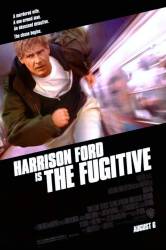
Question: At the very end, what was in the plastic bag that Tommy Lee Jones' character gives to Harrison Ford?
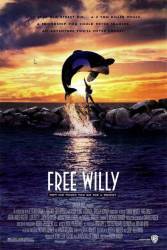
Question: In reality, do orcas actually understand English? Willy seems to understand Jesse when Jesse teaches him tricks.
Answer: While sounds and words can be used to alert orcas and dolphins, they recognize the hand signals and movements as to what to do.
Answer: Dogs can learn words up to the level of a 3 yr old, and whales are smarter than dogs, so definitely.
Dogs don't learn words, they start to recognize the sound that comes with a certain word like "stay" or "fetch", it's got more to do with the intonation than the actual word. They don't know what the word actually means. They can't imitate it nor can they recognize it in a sentence.
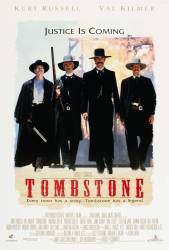
Question: What did Doc mean when he said "It's not revenge he's after. It's the reckoning"?
Chosen answer: A reckoning is like a judgment day, exacting retribution for one's actions. Doc was very well educated and had a very large vocabulary. He was correctly pointing out the subtle difference between revenge (to make Wyatt feel better about losing Morgan and about Virgil's crippling injury) and the fact that Wyatt was bringing about a judgment day (or reckoning) for each of the men who hurt his family.
Answer: I've spent a lot of time thinking about this very question, and here's what I've come up with. I think there are at least two differences between revenge and a reckoning. First, I think it has to do with the scale of the response to an offending action. Revenge, in my mind, is an eye for an eye, i.e, "You killed my brother and wounded another, so I will inflict the same action on your family (or group, gang, whatever). " A reckoning is less a measured response to an offending action and more of a full-scale punishment, i.e, "You killed my brother and wounded another, so I will now slaughter your entire family-including those who were not directly responsible for the offending action." Second, I think there is also a difference in motivation. Revenge tends to be a very personal response to something, whereas a reckoning tends to be more of a response fueled by a need for justice. In Wyatt's case, it was both. He was enraged by what happened to his family, but was also a lawman.
Thank you for this response! I've only seen Tombstone a million times and asked the same question every time. It's hard to separate the difference between the two but I believe you nailed it. Well done.
I'm thinking the opposite in terms. Revenge is "Reflexive" and is generally any means necessary (out of an abundance of pain or rage) to hurt the other party. "Revenge is a dish best served cold." If one is exacting justice there's no need to be cold hearted. Therefore, Reckoning is (to me) a fair balancing of the "scales" hence "an eye for an eye." Not only consequences of actions as it were but a corrective action to an incorrect circumstance. Just my understanding.
The problem with that theory is there is no difference in the end because the end result was the same...the killing. True reckoning could have only been achieved though the apprehension and punishment by trial and jury, anything other than that is simply revenge.
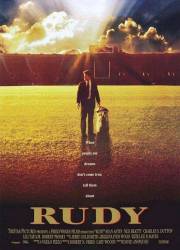
Question: What is the name of the actor who plays Notre Dame player 75, last name Mateus? I can't find him in the credits. He's the guy who starts chanting "Rudy" during the Georgia Tech game. I know Al Snow aka Allen Sarven plays an uncredited Notre Dame player in the movie, but it is not him - I have seen pics of Al Snow, and he is NOT the guy. There is more than one uncredited Notre Dame player in the film. (I have posted this question before, and the reply was Al Snow, so please don't answer this unless you actually know who the actor is. Thank you.)
Answer: According to the Trivia section (as well as some web searching) it seems to be Peter Rausch, an ex-Notre Dame football player.
Answer: Peter Rausch had already completed his NCAA eligibility by the time the movie started filming. He can be seen wearing the number 75, starting the "Rudy" chant from the field. His character's name is "Steve."
Answer: His real last name is Mateus. He and several Western Michigan University football players were cast in the film. I know this for fact because I worked at Scott's iron Campus in Kalamazoo, Michigan. He and several of his friends were close friends with the owner and were in the restaurant almost daily. They also built a loft bed for me in the dorms.
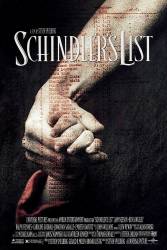
Question: Does anyone know the name of the song which is playing on the radio in the beginning of the movie, when Schindler is getting dressed for the party?
Answer: "Gloomy Sunday".
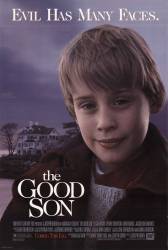
Question: Why would Henry do so many evil things to his own family?
Answer: Henry apparently has what is called a "conduct disorder" - the term used for kids below the age of 18 engaging in what would be (and most likely will become) a diagnosis of sociopathy/psychopathy (antisocial personality disorder) when he becomes an adult. He is "evil", highly manipulative, self-centered, without remorse or other true feelings, and probably incapable of forming loving or long-term attachments. Many sociopaths are believed to have above average intelligence and make good imposters, capable of fooling others because they come across as "charming."
Answer: Because he's nuts!
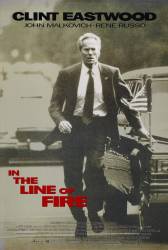
Question: After they search Leary's hotel room, they find a piece of paper that says "SW SKELLUM LA." We learn that the SW stands for Southwest (a bank he was using) and SKELLUM is a phone number. What does the LA mean?
Chosen answer: LA is short for Los Angeles, which refers to the city Leary attempts to assassinate the president in.

Question: At the end of the movie, it shows Benny managing to steal home, being called safe, the catcher arguing that Benny was out and the umpire saying Benny was safe. In slow motion, it shows the catcher catching the ball and tagging Benny as he slides into home so why wasn't Benny called out?
Answer: The umpire got the call wrong in that case. It happens all the time in real life. It wasn't allowed back then, but now Major League Baseball and other sports leagues will use instant replay to make sure they get close calls right.
Answer: The catcher tags Benny on the chest after he touches home plate with his left hand. Safe.
Answer: The film shows Benny beating the tag. Although the ball gets there before Benny, the catcher tags Benny a split second after his hand touches home plate.
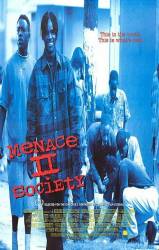
Question: What is the name of the Black and White movie that Caine and his Grandparents are watching in the house after Caine has been shot?
Answer: It's a Wonderful Life.
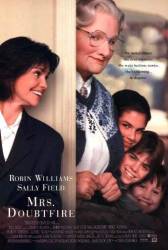
Question: When Daniel is calling home to apply for the job of housekeeper, why did he use different accents instead of just using the British accent instantly?
Answer: Daniel was pretending to be different people that were just all very horrible, so he used different accents. This way, when the "British nanny" calls, he was hoping Miranda would instantly consider him. If he called pretending to be Ms. Doubtfire right away, she might not have basically given him the job right away. And if he used the charming British accent for all his characters, it would have lost its charm when he decided to be Ms. Doubtfire.
Answer: He was just practising or trying it out, and took a while to think of it.
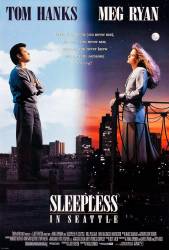
Question: What is the restaurant Annie and Walter are sitting in that looks out onto the Empire State Building?
Answer: That would be the Rainbow Room which is located at 30 Rockefeller Plaza (Annie rushes out the door and gets into the taxi), the iconic skyscraper in Rockefeller Center.
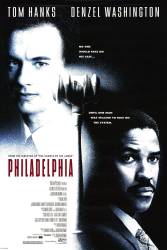
Question: At the end of the film just before Tom hanks dies, he lowers his oxygen mask and says to partner Banderas "I'm ready". Ready for what exactly? Ready to die? Ready for a bit of final smooching? Or ready (and this is just my assumption) for Banderas to pull the plug?
Chosen answer: Ready to die.
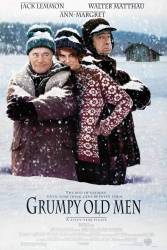
Question: Did John Gustafson's ex wife die or did they just get divorced?
Answer: John Gustafson and his wife, May, were divorced after 20 years of marriage.
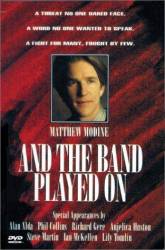
Question: I would very much like to have all the people featured in the montage during the Elton John song at the very end identified.
Answer: Interspersed with scenes of vigils, marches, AIDS quilt panels, and ordinary adults and infants with AIDS, the following famous figures appear: The three men in the newspaper photo shown are Michael Callen of NY, Anthony Ferrera of Washington, DC, and Roger Lyon of San Francisco (who is quoted in the headline, "I came here today in the hope that my epitaph would not read that I died of red tape"). Bobbi Campbell was a San Francisco AIDS activist, most remembered for initially opposing the closing of bathhouses during the crisis. Next is a picture of Ryan White, the young hemophiliac notable for acquiring HIV via blood transfusion, and fighting to remain in school when he had developed AIDS. Next is Michael Jackson walking up to greet Ryan White's mother - Jackson had become friends with Ryan White's family during his struggle. Next is Rock Hudson, actor and one of the first (but less than eager to be so) public faces of AIDS. Anthony Perkins, actor most famous for his role in "Psycho." Tina Chow - fashion icon and jewelry designer. Ballet dancer Rudolph Nureyev. Tennis player Arthur Ashe. The cast of "A Chorus Line" followed by its creator, Michael Bennett. Performance artist Liberace. Freddie Mercury of the band "Queen." Princess Diana of Wales, notable for her charitable works for people with AIDS. Elizabeth Taylor, actress and co-founder of the American Federation for AIDS research. Elizabeth Glaser, wife of actor and director Paul Michael Glaser, who contracted HIV from a blood transfusion while giving birth and then unknowingly passed the virus on to their daughter. Basketball player Magic Johnson. Larry Kramer, co-founder of ACT-UP and the Gay Men's Health Crisis. Arthur Ashe again. AIDS activist Allison Gertz. News reporter Max Robinson of Chicago. Fashion designer Roy Halston Frowick, known simply as "Halston." Fashion designer WIlli Smith (AIDS quilt panel). Fashion Designer Perry Ellis. Singer-songwriter Peter Allen. Studio 54 owner Steve Rubell. Artist Keith Haring. Congressman Stewart McKinney. Actor Denholm Elliott ("Raiders of the Lost Ark"). Actor Brad Davis ("Midnight Express"). Actress Amanda Blake ("Gunsmoke"). Actor Robert Reed ("The Brady Bunch"). Philosopher and author Michael Foucault (AIDS quilt panel only). Tom Waddell, athlete and founder of the "Gay Olympics" (later named "Gay Games" due to copyright issues).
Thank you for posting this.
Thank you so much! Your time is much appreciated.
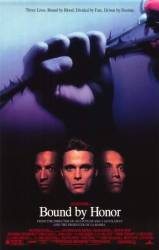
Question: During the hill top fight between VL and 3P, Spiders Impala doesn't show any damage until the end when it shows the windshield with a shotgun blast. Was that shooting part of an extended scene that was cut in editing?
Answer: Extended part.
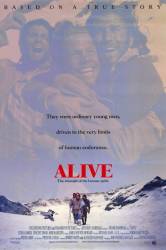
Question: I'm curious as to why Paéz is the narrator in the beginning and end of the film, when the movie focuses mainly on Canessa and Parrada as main characters. Almost all of the boys are alive today, and even if they weren't it is not Páez himself who is being interviewed but John Malcovich as Páez. So I'm still curious as to why they chose Páez instead of Parrado or Canessa, as they are both alive today.
Answer: Keeping in mind that some parts of the audience were not familiar with the details of this story, using Paez as the narrator retains some of the suspense of Canessa and Parredo's journey across the Andes. If the audience is not told at the start that they survive, at least some viewers may have considered that one of them may die during their trek to civilization.
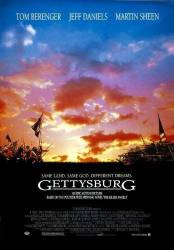
Question: Was Josh Chamberlain really given mutineers like in the movie?
Answer: Yes. After the 2nd Maine Infantry was disbanded, there were 120 men with 1-year of service left. They mutinied because they said they only agreed to fight under the 2nd Maine flag and the Army disagreed. So they were marched under guard to the 20th Maine, led by Chamberlain. Chamberlain was able to convince most of them to fight, even though he was ordered to shoot any who did not fight.
Is there a reason why a few of them refused to fight?
Yes. The same reason why they mutinied.
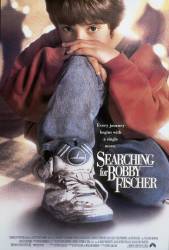
Question: When Josh's father is reading a book to Josh, the passage we hear goes something like "And when he saw that the cottage was completely destroyed, the monster fled and took shelter in the woods." Does anyone have any idea what book they were reading?
Answer: "The Vampyre" by John Polidori.
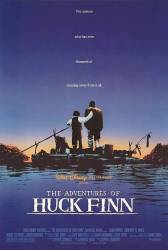
Question: In the last shot of the film, Huck runs off into the sunset. Where could he be running off to? Did he run to get on the steamer boat or did he just run anywhere he could be going to?
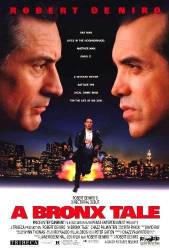
Answer: It's a cold compress. You squeeze it, and the inner bag breaks mixing chemicals and it gets very cold. It helps to minimize swelling. He gave it to Kimball for all the bruises he had.
Grumpy Scot